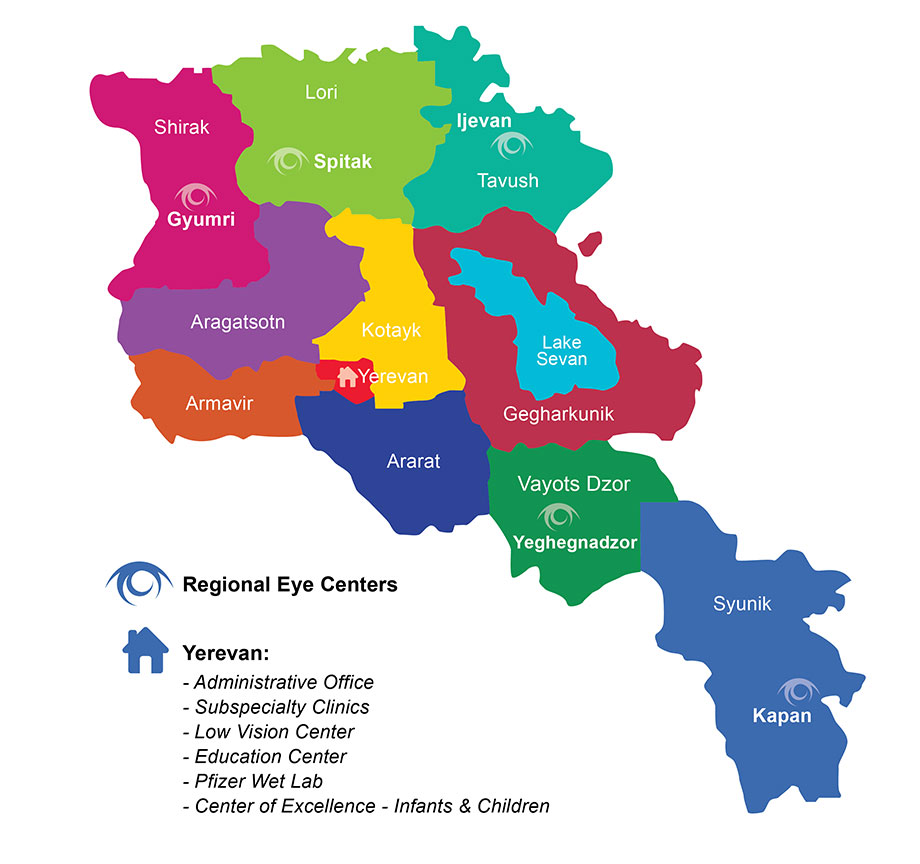Glaucoma is a group of eye conditions in which the optic nerve is damaged. This prevents the visual message from being sent from the eye to the brain and leads to eventual blindness unless it is recognized and treated. In most cases damage to the optic nerve results from elevated pressure within the eye that is caused by a backup of fluid in the eye. Glaucoma can develop in one or both eyes.
Who is most likely to get glaucoma?
Anyone can get glaucoma, however, some people are at higher risk. They include:
- Everyone over age 60.
- People with a family history of glaucoma.
- People with diabetes.
- People with a history of uveitis or inflammation within the eye.
- People with a history of trauma to the eye.
What are the symptoms?
In angle-closure glaucoma, the eye pressure increases suddenly. Symptoms include redness of the eye and blurred vision as well as severe pain in the brow or headache and nausea. This is a medical emergency and without treatment the eye can become blind in as few as one or two days.
Open-angle glaucoma is ten times more common and is a chronic form that slowly causes loss of vision. This is often so slow that the patient may not even realize it. At first, there are no symptoms. Vision stays normal, and there is no pain. However, as the disease progresses, a person with glaucoma may notice his or her side vision gradually failing. Objects in front may still be seen clearly, but objects to the side may be missed, almost as if one is looking through a tube. As the disease worsens, the field of vision narrows and blindness results.
How is glaucoma detected?
Glaucoma is detected through a comprehensive eye exam. This includes visual acuity and side vision tests, measuring pressure inside the eye and examining the optic nerve.
How can glaucoma be treated?
Although glaucoma cannot be cured, it can usually be controlled. The main treatment for glaucoma aims to reduce the pressure in the eye.
Medications
These may be either in the form of eye drops or pills. Some drugs are designed to reduce pressure by slowing the flow of fluid into the eye. Others help to improve fluid drainage. For most people with glaucoma, regular use of medications will control the increased fluid pressure. But, these drugs may stop working over time. Or, they may cause side effects. If a problem occurs, the eye care professional may select other drugs, change the dose, or suggest other ways to deal with the problem.
Laser surgery
During laser surgery, a strong beam of light is focused on the part of the eye where the fluid leaves. This makes it easier for fluid to exit the eye. Over time, the effect of laser surgery may wear off. Patients who have this form of surgery may need to continue taking glaucoma drugs to keep their pressure under control.
Surgery
Surgery can also help fluid escape from the eye and thereby reduce the pressure. However, surgery is usually reserved for patients whose pressure cannot be controlled with eye drops, pills, or laser surgery.
What can you do to protect your vision?
Studies have shown that the early detection and treatment of glaucoma, before it causes major vision loss, is the best way to control the disease. High-risk groups for the disease should make sure to have their eyes examined every two years by an eye care professional.
Intraocular pressure (IOP)
Intraocular pressure (IOP) is the pressure caused by the fluid inside the eye that helps maintain the shape of the eye. The level of pressure inside the eyes depends on:
- How much fluid is produced inside the eye?
- Whether fluid can travel normally through the eye.
- How well the fluid is removed from the eye.
- The pressure within the eyes varies during the day. Normally, the pressure
Possible Risk Factors for Glaucoma
- High Myopia (near sightedness)
- Diabetes
- Hypertension
- Eye Injury or Surgery
- Other Risk Factors
- History of steroid use
- Migraine headache and peripheral vasospasm
- Sleep-related breathing disorder
- Gender: Male







